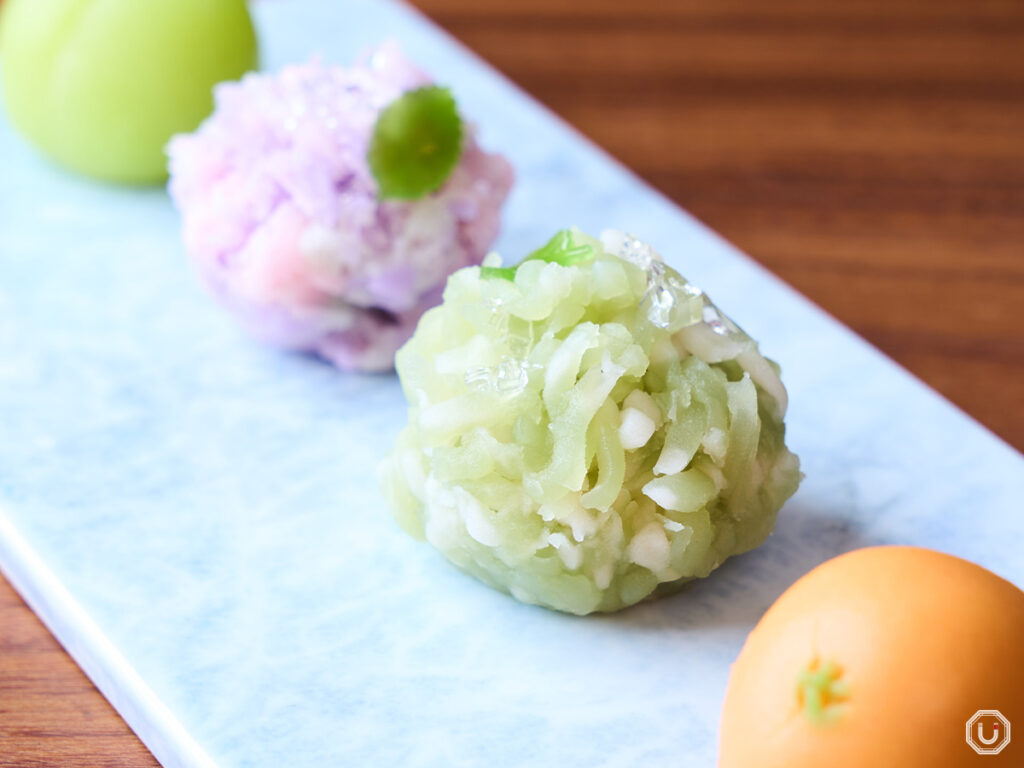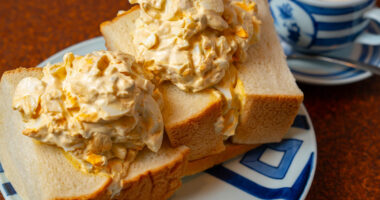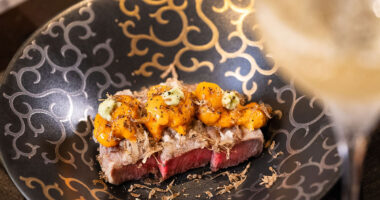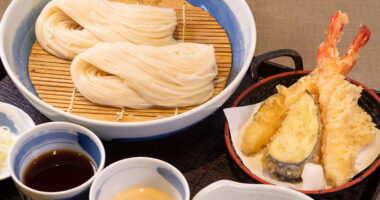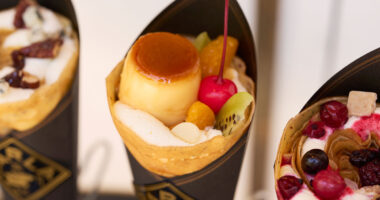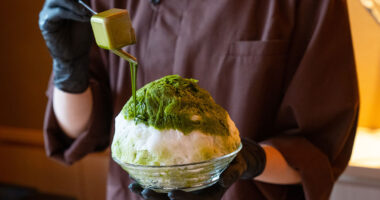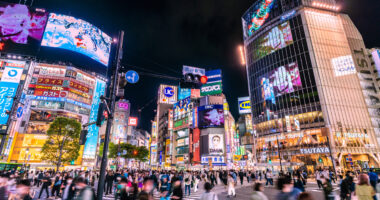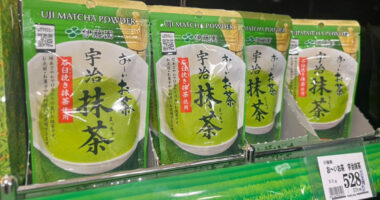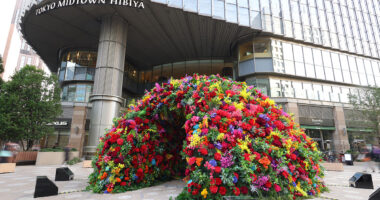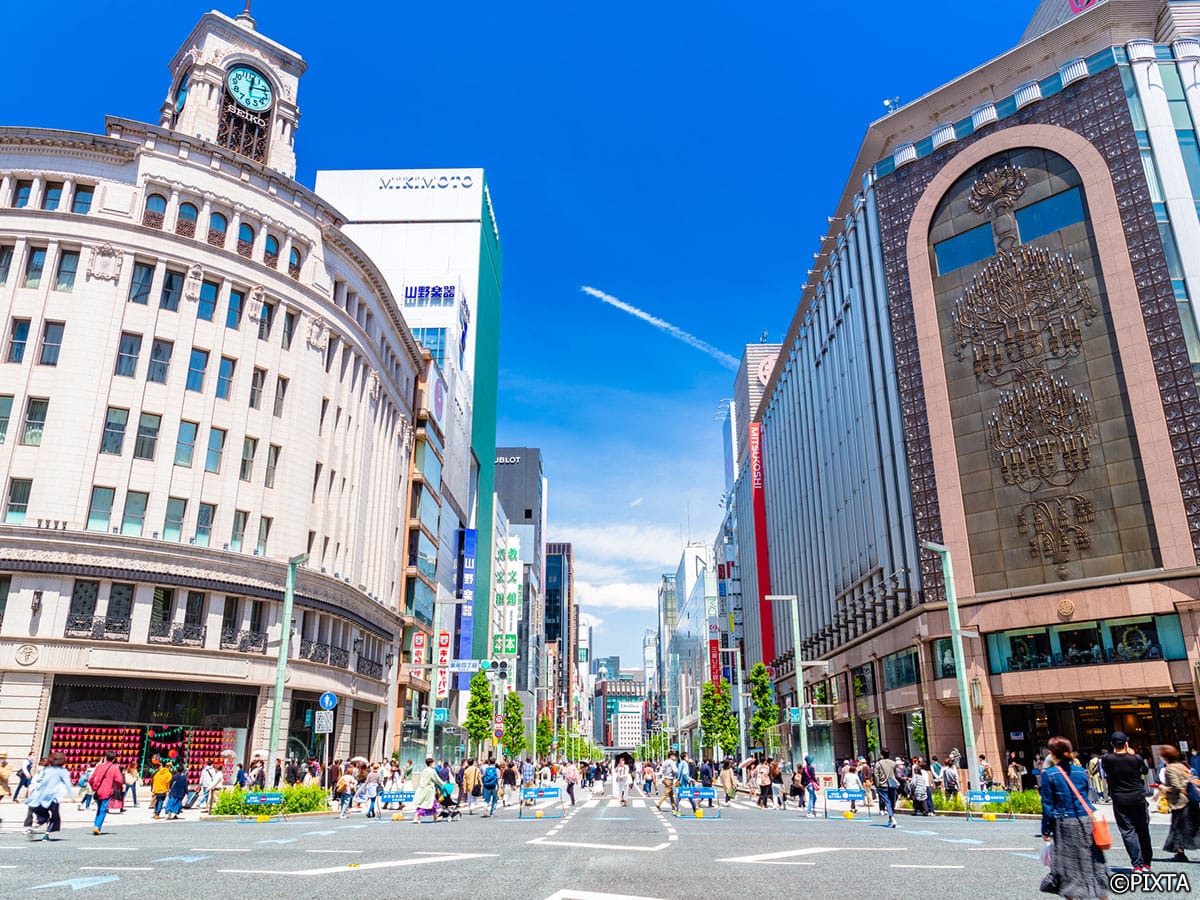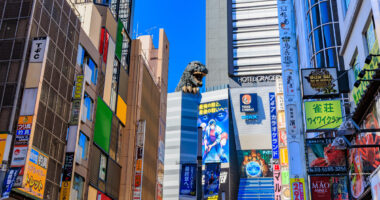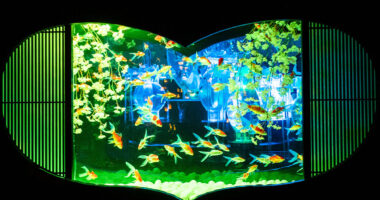Wagashi, made from natural Japanese ingredients like azuki red beans, mochi, and agar, are delicate and artistic traditional sweets that reflect Japanese sensibilities.
Featuring designs inspired by nature and the seasons, and characterized by gentle sweetness, they exude a quiet beauty.
“Imagashitsukasa Ginza Fugetsudo” is a modern-style Japanese cafe where you can enjoy the charm of wagashi with a contemporary sensibility.
Founded in 1872, this long-established wagashi shop with over 150 years of history offers a unique Japanese experience in Ginza.
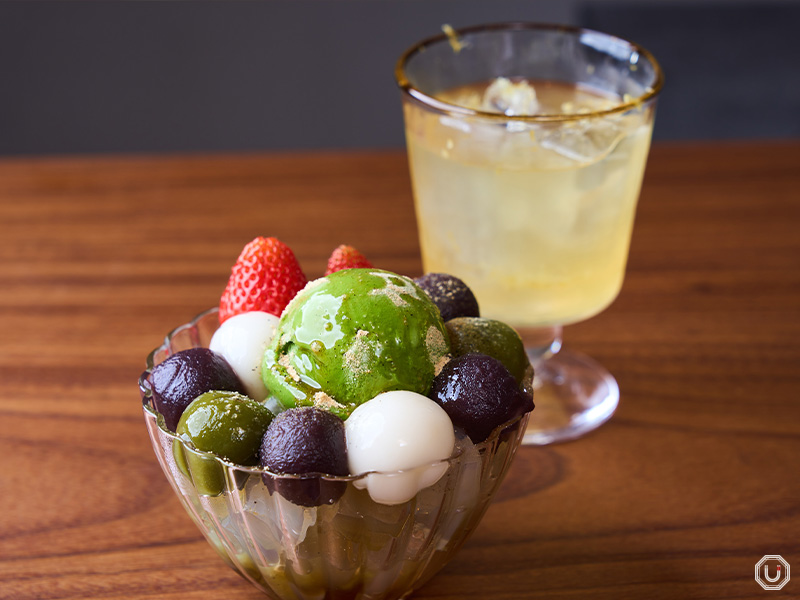
Mesmerizing anmitsu made right before your eyes
In the world of wagashi, seasonal changes are a given—menus shift with the time of year and traditional holidays. At Imagashitsukasa Ginza Fugetsudo, desserts like anmitsu (a traditional Japanese dessert featuring agar jelly and red bean paste often with fruit) and Mont Blanc are updated regularly to match the season.
Among these, the standout this time is the “Matcha Cream Anmitsu.”
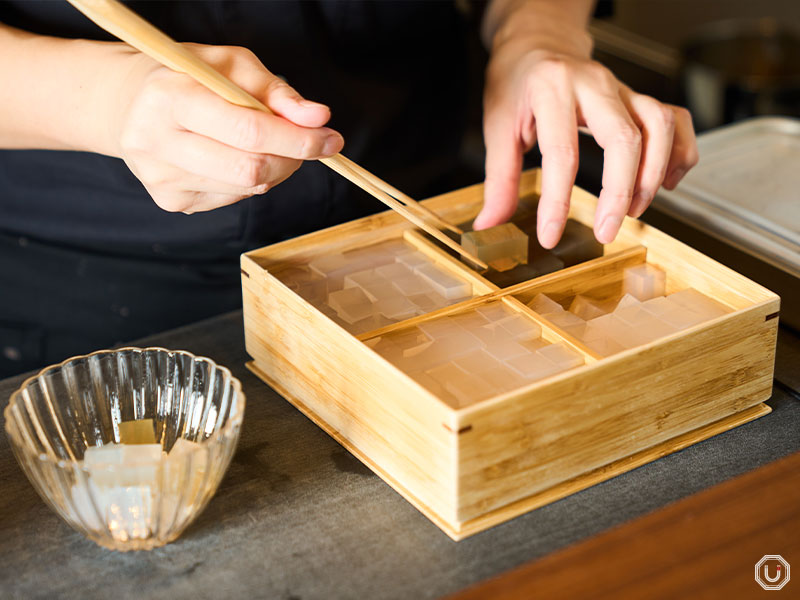
Making the Matcha Cream Anmitsu
At Imagashitsukasa Ginza Fugetsudo, anmitsu is prepared by skilled artisans right in front of you.
It’s not just about eating—watching the elegant presentation unfold is part of the experience.
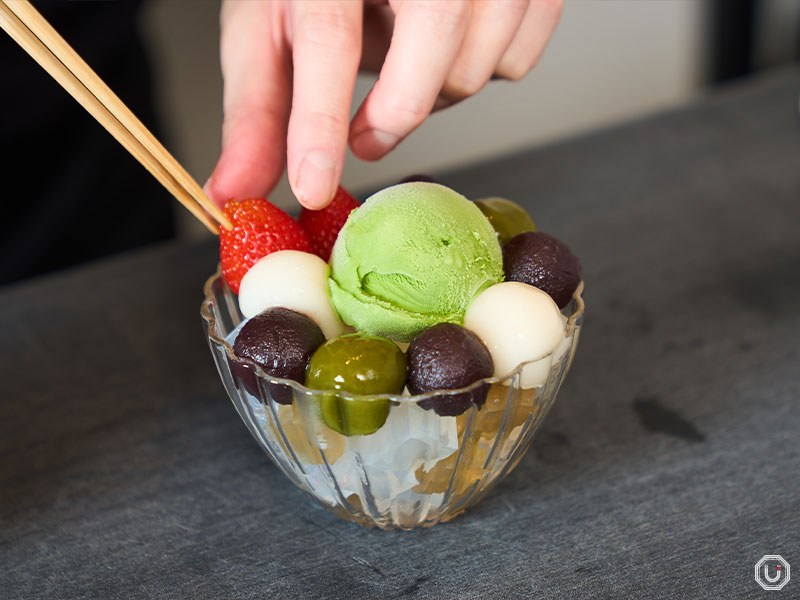
The dish includes two types of agar jelly, sweet bean paste, seasonal fruit, shiratama (rice flour dumplings) in matcha and plain varieties, and a scoop of Uji matcha ice cream. It’s finished with a sprinkle of Kyoto kinako (toasted soybean flour) and a drizzle of kuromitsu black sugar syrup.
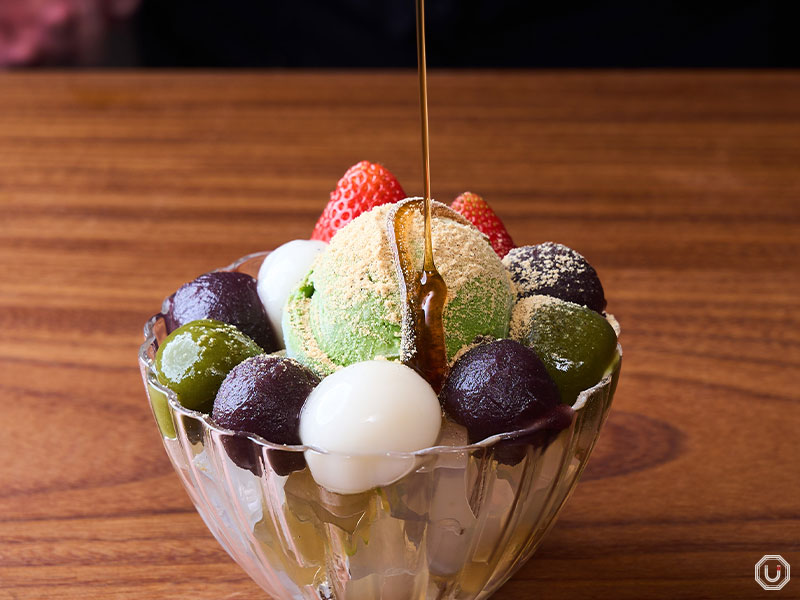
The beauty of anmitsu lies in the contrast: the mild agar jelly pairs with the rich sweetness of red bean paste and kuromitsu, creating a complex but balanced flavor. Each ingredient is carefully selected, offering a refined and layered taste.
The chewy texture of freshly made shiratama, the aroma of matcha ice cream, and the tartness of seasonal fruits all add depth with every bite.
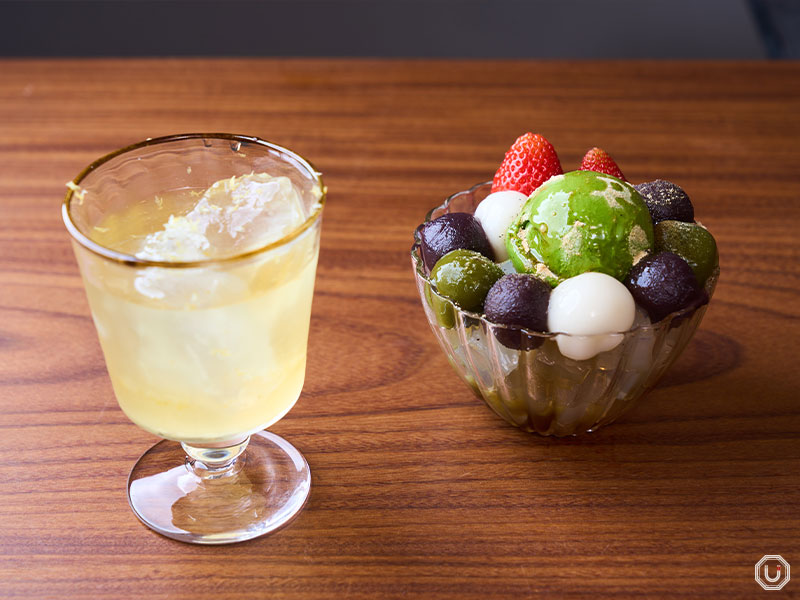
“抹茶クリームあんみつ(ドリンク付き),” Matcha Cream Anmitsu (with drink) 2,700 JPY (tax included)
You can choose your drink from options like green tea or black tea, but we went with the “Citrus & Herb Cold Tea.”
This refreshing drink blends green tea with herbs like lemongrass, lemon myrtle, and peppermint, along with seasonal citrus fruits.
The rim of the glass is garnished with freshly grated bergamot peel, releasing a burst of citrus fragrance the moment it’s placed before you.
With the first sip, you’re enveloped in the layered sweetness, aroma, and flavor of citrus. According to the staff, this tea is like a “perfume you can drink.”
It’s a special glass of tea—one that makes you forget the summer heat.
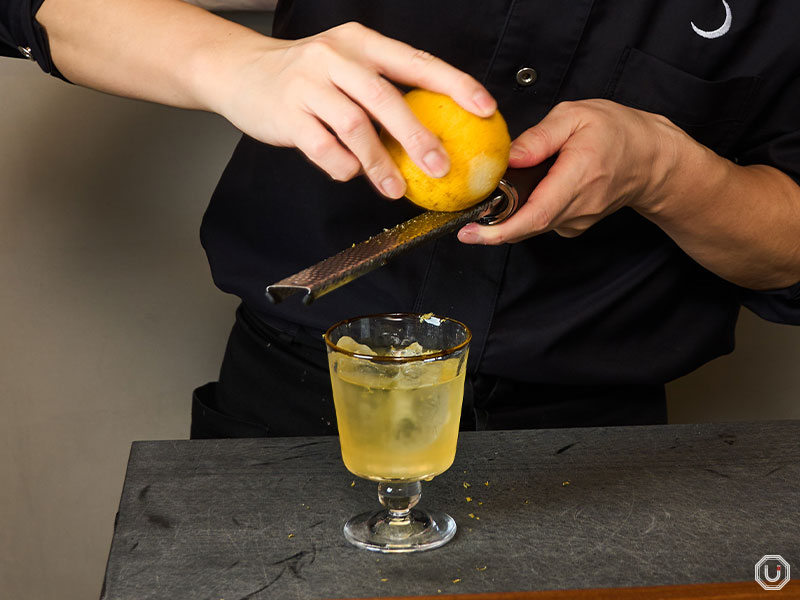
Refined artisanal sweets that reflect Japan’s scenery
Jōnamagashi are high-grade wagashi often served during tea ceremonies, designed to represent the beauty of Japan’s changing seasons.
While many are made from nerikiri (a confection made from white bean paste and glutinous rice flour), Imagashitsukasa Ginza Fugetsudo uses jōyo nerikiri, which incorporates yamaimo (Japanese wild yam) for a softer, more pliable texture—perfect for intricate, hand-crafted designs.
The shop always offers four seasonal jonamagashi, available individually or as a boxed set.
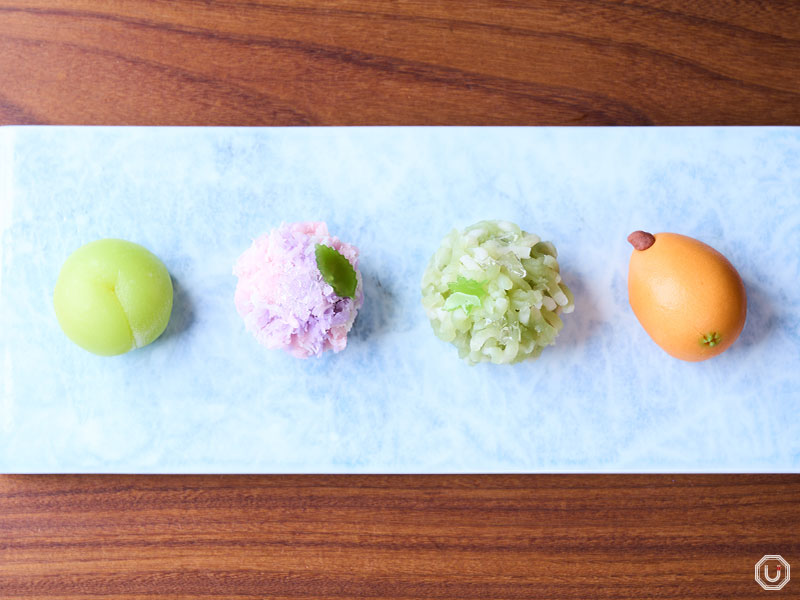
“季節の上生菓子 4種詰め合わせ,” Seasonal Jonamagashi (4 piece set) 2,000 JPY (tax included)
The selection changes with the seasons, and during our mid-June visit, the sweets captured scenes of early summer transitioning into the full summer season.
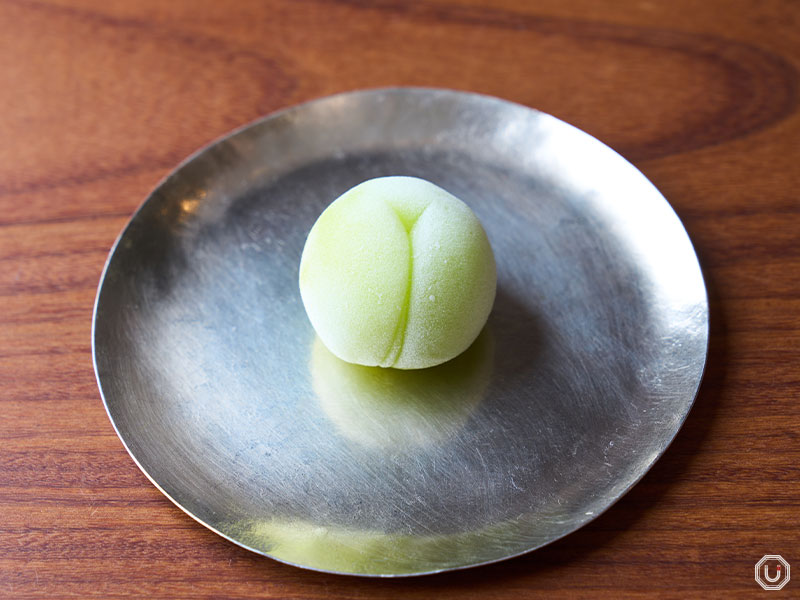
“上生菓子『青梅』,” Jonamagashi Ao-ume
This jonamagashi is called “Ao-ume” (green Japanese plum), and is modeled after a green plum before it ripens.
Its craftsmanship is so refined, it almost looks real. Inside is a rich yellow bean paste made with egg yolk.
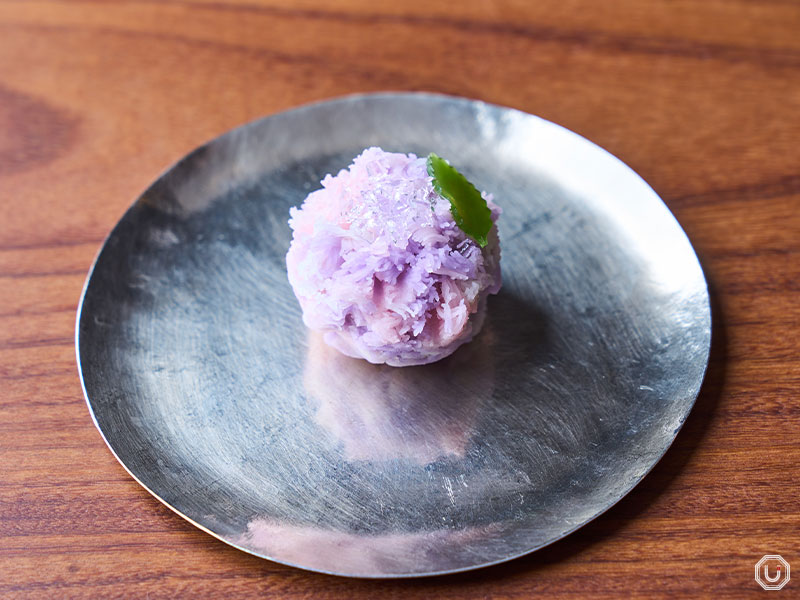
“上生菓子『雨上がり』,” Jonamagashi Ame-agari
With its delicate colors and soft gradation, this beautifully crafted jonamagashi is called “Ame-agari” (After the Rain). It captures the look of hydrangeas in full bloom after a rain shower during Japan’s rainy season. It’s made with smooth red bean paste and joyo nerikiri.
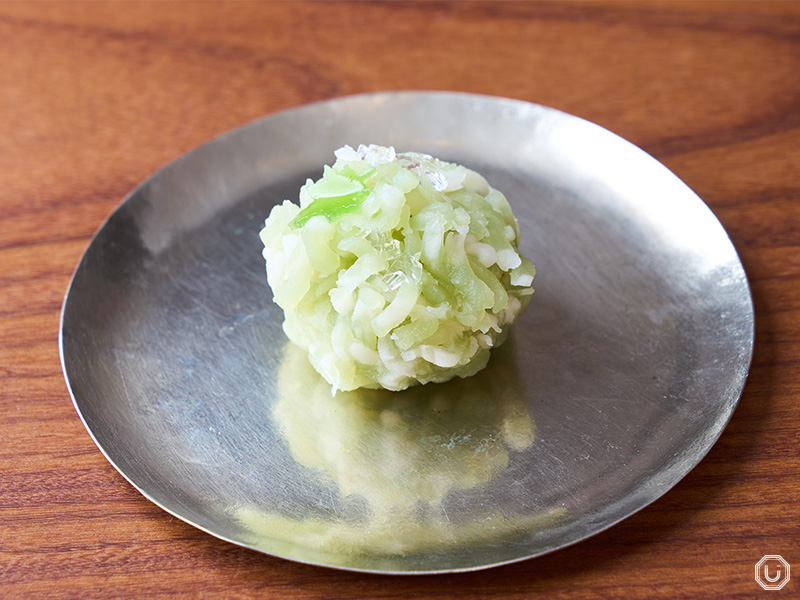
“上生菓子『青嵐(せいらん)』,” Jonamagashi Seiran
Inspired by the wind that shakes fresh leaves after a rain, the “Seiran” (Early Summer Breeze) portrays the moment when droplets scatter and the underside of a leaf peeks out. Its delicate craftsmanship embodies the artisan’s sensitivity and precision.
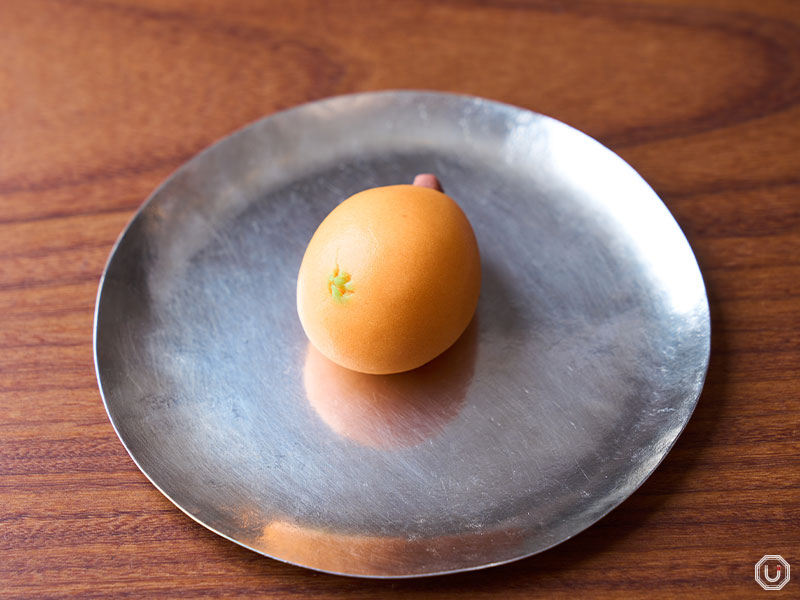
“上生菓子『びわの実』,” Jonamagashi Biwa no Mi
This piece, “Biwa no Mi” (Loquat Fruit), is another stunning creation so lifelike you might mistake it for the real thing.
Inside is a refreshing lemon yōkan (a firm, jellied dessert made of red bean paste, agar, and sugar), while the stem is crafted from cinnamon.
A refined wagashi at a hidden Ginza gem
Tucked away the third floor of a building, Imagashitsukasa Ginza Fugetsudo offers a hidden, intimate atmosphere known only to those in the know.
The refined yet minimalist interior features just five counter seats. As seating is limited and reservations are prioritized, booking in advance is highly recommended.
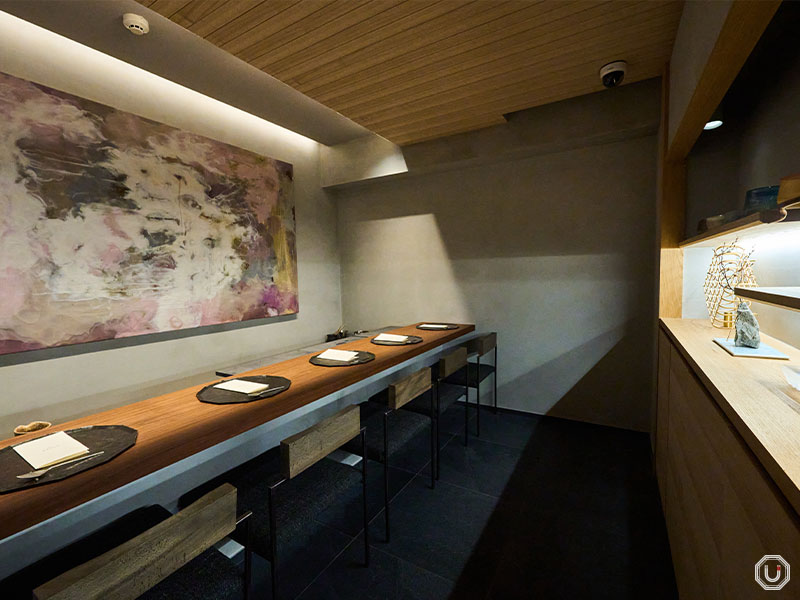
Interior of Imagashitsukasa Ginza Fugetsudo
The shop also sells sweets for takeout.
While reservations aren’t required to purchase them, it’s best to contact the shop in advance if you’re hoping to buy them as a gift or want to be sure they’re available.
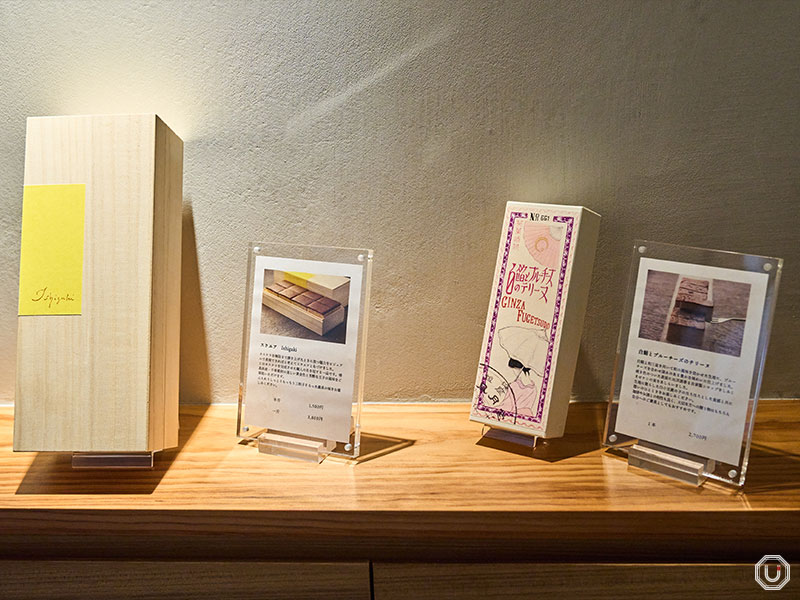
Wagashi for take-out
Whether enjoyed in-store or taken to go, each sweet—though the menu is small—is crafted with meticulous attention to detail. You can truly feel the 150-year legacy of Ginza Fūgetsudō in every bite.
This is a place we wholeheartedly recommend to anyone looking to enjoy a truly special moment.
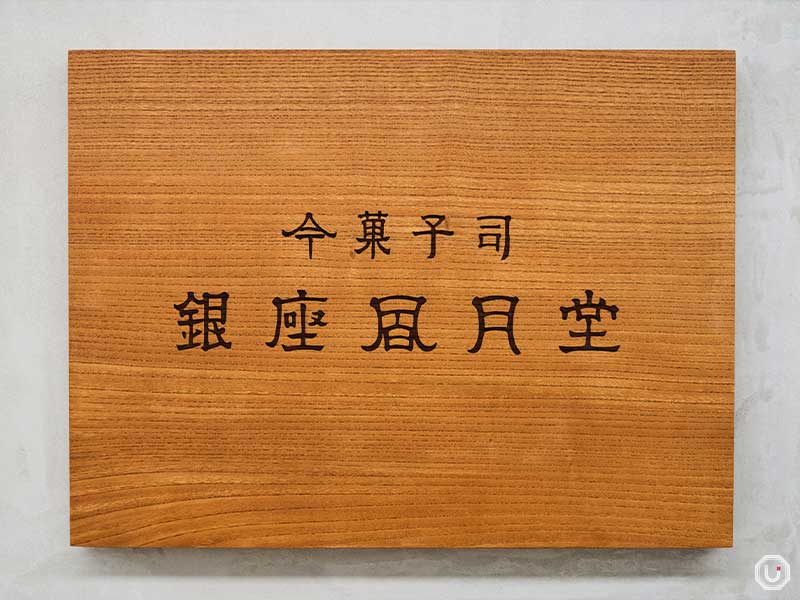
Information
| Store name | 今菓子司 銀座凮月堂 Imagashitsukasa Ginza fugetsudo |
|---|---|
| Address | Ginza Fugetsudo Building 3F, 6-6-1 Ginza, Chuo-ku, Tokyo |
| Access |
Ginza Station 2-minute walk from Exit B6
|
| Phone number | 03-3572-1777 |
| Reservations | Accepted Reservations for the cafe can be made via Tabelog, and for sweets purchases via TableCheck. |
| Payment |
|
| Hours | 10:00-18:00(last order 17:00) |
| Closed | Cafe: Thursday & Friday Sweets purchases: Thursday and Sunday |
| Seating | 5 counter seats |
| Smoking | All seats are non-smoking |
| Official website | https://ginza-fugetsudo.co.jp/ |
| Other information |
|
※Menu contents, prices, store information, etc. are current as of July 2025.
